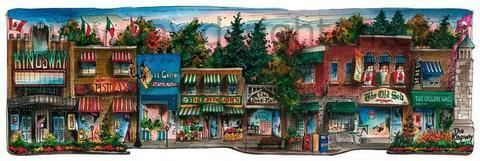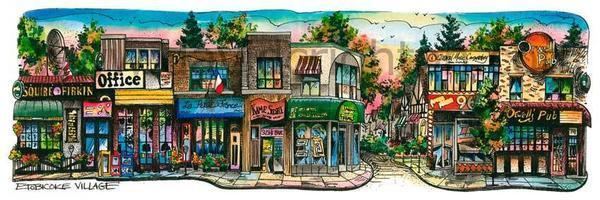Nationality British | Name David Crighton | |
 | ||
Born 15 November 1942Llandudno, Wales ( 1942-11-15 ) Institutions Woolwich PolytechnicImperial College LondonUniversity of LeedsUniversity of Cambridge Thesis Wave motion and vibration induced by turbulent flow (1968) | ||
downton abbey
David George Crighton, MA, PhD, FRS (15 November 1942 – 12 April 2000) was a British mathematician and physicist.
Contents

Missing toronto david crighton art
Life

Crighton was born in Llandudno. His mother, Violet Grace Garrison, had been sent there because of the bombing of London during World War II. He didn't become interested in mathematics until his last two years at Watford Grammar School for Boys. He entered St John's College, Cambridge in 1961 and started lecturing at Woolwich Polytechnic (today University of Greenwich) in 1964, having completed only his bachelor's degree.
A few years later he met John Ffowcs Williams and started to work for him at Imperial College London, while simultaneously studying for his doctorate (awarded in 1969) at the same place. In 1974, he was appointed as a Research Fellow in the Department of Engineering at the University of Cambridge. However, he never took up this post, but instead accepted the chair in Applied Mathematics at the University of Leeds, which he held until 1986.
He then returned to Cambridge as professor of Applied Mathematics in succession to George Batchelor.
Later he became a well-loved Master of Jesus College (1997–2000), and was head of the Applied Mathematics and Theoretical Physics department (DAMTP), where Stephen Hawking worked, in Cambridge between 1991 and 2000, where he was held in huge regard by the faculty and students.
The Institute of Mathematics and its Applications and the London Mathematical Society instituted the David Crighton Medal in 2002 in Crighton's honour. The Award is made triennially by the Councils of the Institute and the Society, with the first award in 2003. The silver gilt medal is awarded to a mathematician who is normally resident in the mathematical community represented by the two organisations for services both to mathematics and to the mathematical community.
Away from his mathematical work, Crighton was a devotee of the music of Richard Wagner, as well as music for the piano.
Work
Crighton's scientific interests were primarily in the theory of waves and aeroacoustics, as well as in some areas of fluid mechanics. He published over 120 papers and one book.
In his first paper, Crighton studied the sound wave associated with turbulent flow over a discontinuous surface formed by two semi-infinite flexible planes. Over the years he worked broadly in the fields of acoustics, equation theory and quasi-diabatic systems including solitons. This included works on the generalised Burgers' equation and inverse scattering theory.
The distinction of his work was recognised by the award of the Rayleigh Medal of the Institute of Acoustics, the Per Bruel Gold Medal of the American Society of Mechanical Engineers and the Otto Laporte Award of the American Physical Society.
